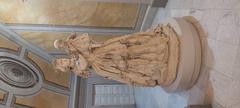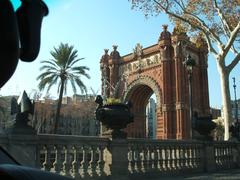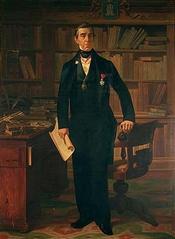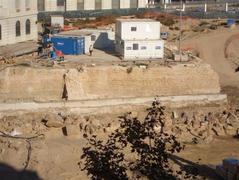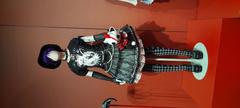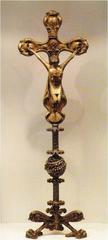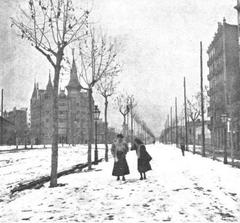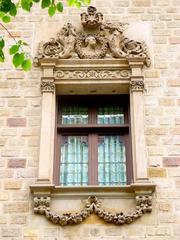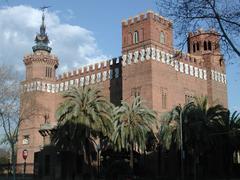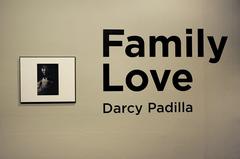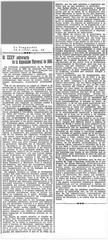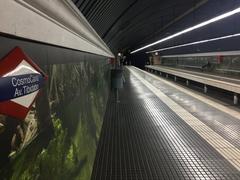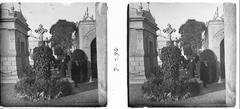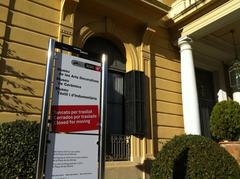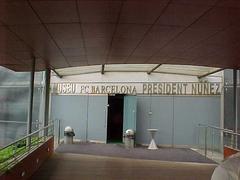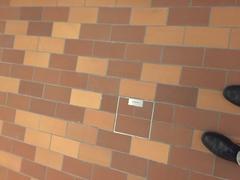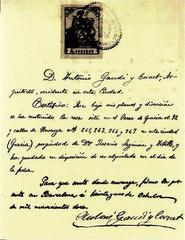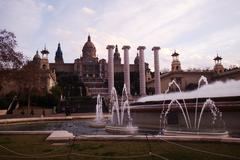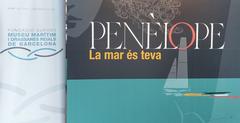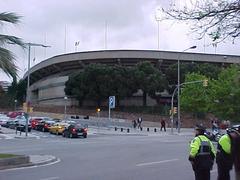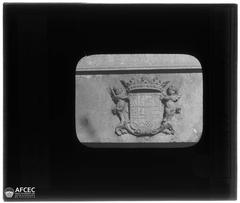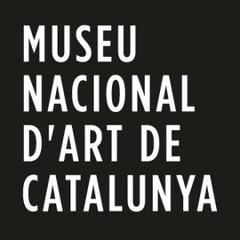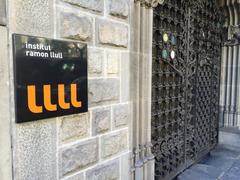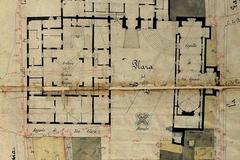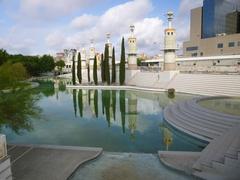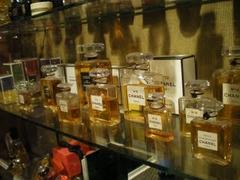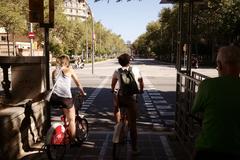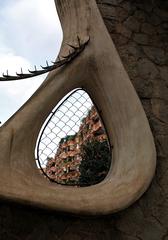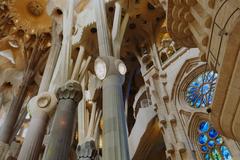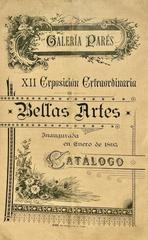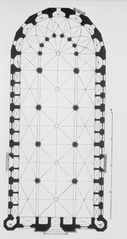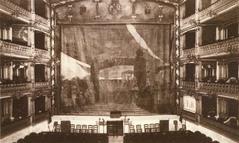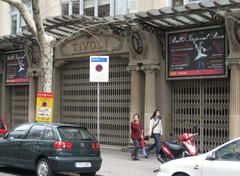
Comprehensive Guide to Visiting Palau Reial de Pedralbes, Barcelona, Spain
Date: 19/07/2024
Introduction
Nestled in the affluent Pedralbes neighborhood of Barcelona, Spain, the Palau Reial de Pedralbes (Royal Palace of Pedralbes) is a historical and cultural landmark that offers visitors a captivating journey through time. Originally built in the early 20th century for the influential Güell family and later donated to the Spanish Royal Family, this palace stands as a testament to the architectural prowess and rich history of the region. The estate’s design is a harmonious blend of Modernisme and neoclassical styles, reflecting the creative genius of architects like Eusebi Bona, Francesc Nebot, and the renowned Antoni Gaudí. From its grand staircases and opulent interiors to its lush gardens designed by Jean-Claude Nicolas Forestier, the Palau Reial de Pedralbes showcases the grandeur of Spanish royalty and the elegance of early 20th-century architecture. This guide aims to provide a comprehensive overview of the palace’s history, visitor information, nearby attractions, and practical tips to ensure a memorable visit. Whether you are a history enthusiast, an architecture aficionado, or a casual tourist, the Palau Reial de Pedralbes promises an enriching experience. For more detailed information, you can visit the Barcelona Tourism website.
History of Palau Reial de Pedralbes
Origins and Early History
The Palau Reial de Pedralbes was originally built as a residence for the influential Güell family in the early 20th century. The estate was designed by Eusebi Bona and Francesc Nebot, with significant contributions from Antoni Gaudí. Construction began in 1919 and was completed in 1924. The palace showcases a blend of Modernisme and neoclassical architectural styles.
Royal Residence
In 1926, the Güell family donated the estate to the Spanish Royal Family. King Alfonso XIII and Queen Victoria Eugenie used the palace as their official residence during visits to Barcelona. The estate was subsequently named the Royal Palace of Pedralbes and became a significant location for royal events and gatherings.
Visitor Information
Visiting Hours
The Palau Reial de Pedralbes is open to the public from Tuesday to Sunday, 10:00 AM to 6:00 PM. It remains closed on Mondays and select public holidays. (Barcelona Tourism)
Ticket Prices and Purchasing Options
Tickets for adults are priced at €12, while students and seniors can enjoy a discounted rate of €7. Children under the age of 12 can enter for free. Tickets can be purchased online through the official website or at the entrance of the palace.
Transportation Options
The palace is easily accessible via public transportation. Visitors can take Metro Line 3 (Green Line) to the Palau Reial station, which is a short walk from the estate. Alternatively, several bus lines, including H6, 63, and 78, stop near the palace.
Accessibility Information
The Palau Reial de Pedralbes is wheelchair accessible, with ramps and elevators available for visitors with mobility issues. Accessible restrooms are also provided on-site.
Attractions at Palau Reial de Pedralbes
The Royal Palace
The Palau Reial de Pedralbes, or the Royal Palace of Pedralbes, is a stunning example of early 20th-century architecture. The palace’s design features elegant facades, grand staircases, and opulent interiors. Visitors can explore various rooms, including the Throne Room, the Music Room, and the private chambers of the royal family. Each room is adorned with exquisite furnishings, tapestries, and artworks that reflect the grandeur of the Spanish monarchy.
The Gardens of Pedralbes
The gardens, designed by the renowned French landscape architect Jean-Claude Nicolas Forestier, cover an area of 7 hectares. They feature a variety of Mediterranean and exotic plants, including palm trees, magnolias, and cypresses. The gardens are also home to several sculptures and fountains, including the famous Hercules Fountain designed by Antoni Gaudí.
The Carriage Museum
Located within the palace grounds, the Carriage Museum offers a fascinating glimpse into the history of transportation. The museum houses a collection of carriages, coaches, and automobiles from the 18th to the 20th centuries. Highlights include a luxurious carriage used by King Alfonso XIII and a vintage Rolls-Royce.
The Ceramics Museum
The Ceramics Museum showcases a diverse collection of ceramics from different periods and regions. Highlights include pieces from ancient Greece and Rome, medieval Spain, and contemporary artists. The museum hosts temporary exhibitions and educational programs that explore the history and techniques of ceramic art.
The Music Pavilion
The Music Pavilion, also known as the Pavilion of Alfonso XIII, is a charming building located in the palace gardens. Designed by architect Eusebi Bona, the pavilion was built in 1924 to commemorate the visit of King Alfonso XIII to Barcelona. It features a beautiful Art Deco design and is used for concerts, recitals, and other cultural events.
The Chapel of Santa Maria de Pedralbes
The Chapel of Santa Maria de Pedralbes is a small Gothic chapel located within the palace grounds. Built in the 14th century, the chapel features a simple yet elegant design, with beautiful stained glass windows and an intricately adorned altarpiece.
Nearby Attractions
Monastery of Pedralbes
Located just a 10-minute walk from the palace, the Monastery of Pedralbes is a Gothic-style monastery that offers a serene escape and a glimpse into medieval monastic life.
FC Barcelona Museum
Football enthusiasts can visit the FC Barcelona Museum, situated about 2 kilometers from the palace. The museum showcases the rich history and achievements of the famous football club.
Special Events and Guided Tours
The Palau Reial de Pedralbes hosts various special events throughout the year, including art exhibitions and cultural performances. Guided tours are available for an additional fee, providing in-depth insights into the palace’s history and architecture.
Best Spots for Photography
For the best photos, head to the palace gardens, which feature beautiful fountains and sculptures. The grand staircase inside the palace is also a popular spot for capturing the elegance of the estate.
Visitor Tips
- Opening Hours: The palace and its attractions are open to the public from Tuesday to Sunday, from 10:00 AM to 6:00 PM. It is closed on Mondays and public holidays.
- Admission Fees: General admission is €12, with discounts available for students, seniors, and groups. Children under 12 can enter for free.
- Guided Tours: Guided tours are available in multiple languages and provide in-depth information about the palace’s history, architecture, and collections. It is recommended to book tours in advance, especially during peak tourist seasons.
- Accessibility: The palace and its gardens are wheelchair accessible, with ramps and elevators available for visitors with mobility issues. Accessible restrooms are also provided.
- Photography: Photography is allowed in most areas of the palace and gardens, but the use of flash and tripods is prohibited. Visitors are encouraged to capture the beauty of the palace while respecting the privacy of other guests.
- Nearby Attractions: The palace is located in the Pedralbes neighborhood, which is known for its upscale residential areas and historic sites. Nearby attractions include the Monastery of Pedralbes, the CosmoCaixa Science Museum, and the Camp Nou stadium, home of FC Barcelona.
- Getting There: The palace is easily accessible by public transportation. Visitors can take Metro Line 3 to the Palau Reial station or various bus lines that stop near the palace. Driving is also an option, with parking available nearby.
- Best Times to Visit: The palace is best visited in the spring and fall when the weather is mild and the gardens are in full bloom. Weekdays are generally less crowded than weekends.
- International Tourists: English-speaking staff is available, and most signs and information are provided in multiple languages.
Dining and Shopping
The palace grounds include a café and a gift shop, where visitors can enjoy refreshments and purchase souvenirs. The café offers a selection of snacks, beverages, and light meals, with outdoor seating available in the garden. The gift shop features a range of items, including books, postcards, and locally made crafts. Visitors can also find unique gifts and mementos related to the palace’s history and collections.
FAQ
What are the Palau Reial de Pedralbes visiting hours?
- The palace is open from Tuesday to Sunday, 10:00 AM to 6:00 PM. It is closed on Mondays and public holidays.
How much are Palau Reial de Pedralbes tickets?
- General admission is €12, with discounts available for students, seniors, and groups. Children under 12 can enter for free.
Is Palau Reial de Pedralbes accessible for people with disabilities?
- Yes, the palace is equipped with ramps, elevators, and accessible restrooms to accommodate visitors with disabilities.
Are guided tours available?
- Yes, guided tours are available in multiple languages and provide in-depth information about the palace’s history, architecture, and collections.
Is there parking available at Palau Reial de Pedralbes?
- Yes, parking is available nearby for those who choose to drive.
Conclusion
The Palau Reial de Pedralbes is undeniably one of Barcelona’s most captivating landmarks, offering a unique blend of historical, architectural, and cultural experiences. From its origins as a private residence for the Güell family to its transformation into a royal palace and now a public museum, the estate has played a significant role in the city’s heritage. Visitors can explore the palace’s various rooms, admire the exquisite gardens, and delve into the rich history of the Spanish monarchy. The nearby attractions, such as the Monastery of Pedralbes and the FC Barcelona Museum, further enhance the appeal of this destination. With accessible facilities, guided tours, and a range of events and activities, the Palau Reial de Pedralbes caters to a diverse audience. To make the most of your visit, consider exploring during the quieter weekday mornings and taking advantage of the available resources such as audio guides and guided tours. For more updates and information, you can follow the latest events on the Pedralbes Festival website and the official palace website.


